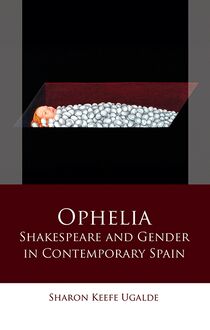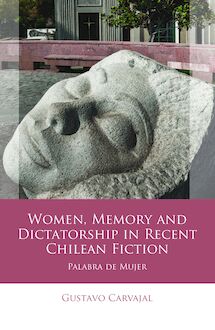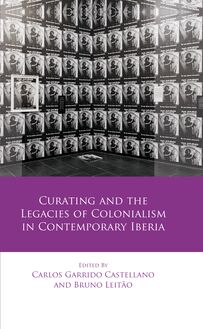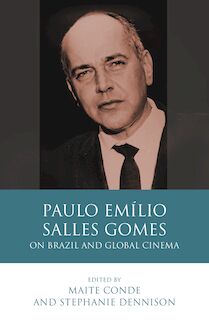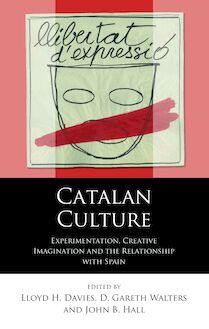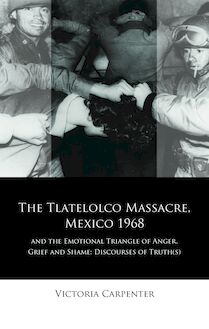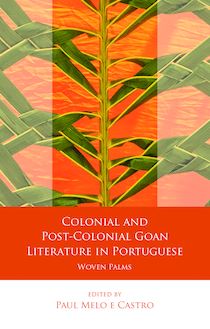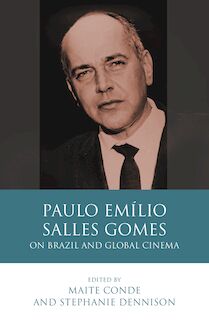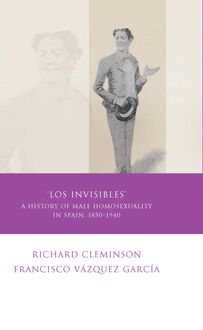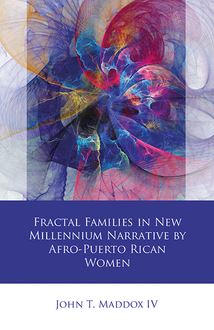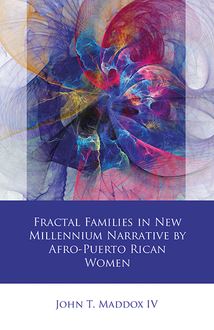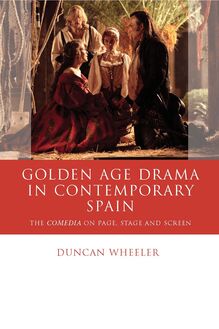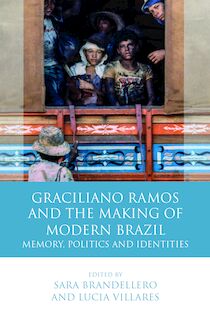-
 Univers
Univers
-
 Ebooks
Ebooks
-
 Livres audio
Livres audio
-
 Presse
Presse
-
 Podcasts
Podcasts
-
 BD
BD
-
 Documents
Documents
-
- Cours
- Révisions
- Ressources pédagogiques
- Sciences de l’éducation
- Manuels scolaires
- Langues
- Travaux de classe
- Annales de BEP
- Etudes supérieures
- Maternelle et primaire
- Fiches de lecture
- Orientation scolaire
- Méthodologie
- Corrigés de devoir
- Annales d’examens et concours
- Annales du bac
- Annales du brevet
- Rapports de stage
La lecture à portée de main
Vous pourrez modifier la taille du texte de cet ouvrage
Découvre YouScribe en t'inscrivant gratuitement
Je m'inscrisHermaphroditism, Medical Science and Sexual Identity in Spain, 1850–1960 , livre ebook
Découvre YouScribe en t'inscrivant gratuitement
Je m'inscrisEn savoir plus
Vous pourrez modifier la taille du texte de cet ouvrage
En savoir plus

Description
Sujets
Informations
| Publié par | University of Wales Press |
| Date de parution | 31 octobre 2009 |
| Nombre de lectures | 0 |
| EAN13 | 9781783163793 |
| Langue | English |
Informations légales : prix de location à la page 0,0584€. Cette information est donnée uniquement à titre indicatif conformément à la législation en vigueur.
Extrait
IBERIAN AND LATIN AMERICAN STUDIES
Hermaphroditism, Medical Science and
Sexual Identity in Spain, 1850 -1960
Series Editors
Professor David George (Swansea University)
Professor Paul Garner (University of Leeds)
Editorial Board
David Frier (University of Leeds)
Lisa Shaw (University of Liverpool)
Gareth Walters (Swansea University)
Rob Stone (Swansea University)
David Gies (University of Virginia)
Catherine Davies (University of Nottingham)
IBERIAN AND LATIN AMERICAN STUDIES
Hermaphroditism,
Medical Science and
Sexual Identity in Spain,
1850 -1960
Richard Cleminson and Francisco V á zquez Garc í a -->
UNIVERSITY OF WALES PRESS CARDIFF 2009
© Richard Cleminson and Francisco V á zquez Garc í a, 2009
All rights reserved. No part of this book may be reproduced in any material form (including photocopying or storing it in any medium by electronic means and whether or not transiently or incidentally to some other use of this publication) without the written permission of the copyright owner except in accordance with the provisions of the Copyright, Designs and Patents Act 1988 or under the terms of a licence issued by the Copyright Licensing Agency Ltd, Saffron House, 6 -10 Kirby Street, London, EC1N 8TS. Applications for the copyright owner s written permission to reproduce any part of this publication should be addressed to the University of Wales Press, 10 Columbus Walk, Brigantine Place, Cardiff, CF10 4UP
www.uwp.co.uk
British Library Cataloguing-in-Publication Data
A catalogue record for this book is available from the British Library.
ISBN 978-0-7083-2204-8
e-ISBN 978 - 1 - 7831 - 6379 - 3
The rights of Richard Cleminson and Francisco V á zquez Garc í a to be identified as authors of this work has been asserted by them in accordance with sections 77, 78 and 79 of the Copyright, Designs and Patents Act 1988.
The publisher has no responsibility for the persistence or accuracy of URLs for any external or third-party internet websites referred to in this book, and does not guarantee that any content on such websites is, or will remain, accurate or appropriate.
Cover image: Image of a gynaecomast taken from Angel Pulido, La lactancia paterna. IV , Revista de Medicina y Cirugía Prácticas , VI (1880), 367. Courtesy of the library of the Faculty of Medicine, University of Cadiz.
Contents
Series Editors Foreword
Acknowledgements
Chapter 1: Introduction: Male, Female or In-Between? Towards a History of the Science of Hermaphroditism in Spain, 1850-1960
Chapter 2: From Sex as Social Status to Biological Sex
Chapter 3: Between Diagnoses: Hermaphroditism, Hypospadias and Pseudo-hermaphroditism, 1870-1905
Chapter 4: Gonads, Hormones and Marañón s Theory of Intersexuality, 1905-1930
Chapter 5: From True Sex to Sex as Simulacrum
Chapter 6: Conclusions
Bibliography
Series Editors Foreword
Over recent decades the traditional languages and literatures model in Spanish departments in universities in the United Kingdom has been superceded by a contextual, interdisciplinary and area studies approach to the study of the culture, history, society and politics of the Hispanic and Lusophone worlds -categories which extend far beyond the confines of the Iberian Peninsula, not only in Latin America but also to Spanish-speaking and Lusophone Africa.
In response to these dynamic trends in research priorities and curriculum development, this series is designed to present both disciplinary and interdisciplinary research within the general field of Iberian and Latin American Studies, particularly studies which explore all aspects of Cultural Production (inter alia literature, film, music, dance, sport) in Spanish, Portuguese, Basque, Catalan, Galician and indigenous languages of Latin America. The series also aims to publish research on the History and Politics of the Hispanic and Lusophone worlds, at the level of both the region and the nation-state, as well as on Cultural Studies which explore the shifting terrains of gender, sexual, racial and postcolonial identities in those same regions.
Acknowledgements
Richard Cleminson would like to acknowledge the intellectual stimulus freely given by Rosa Maria Medina Doménech, with whom the ideas that became this book were originally discussed, the searching questions posed at the Hispanic Studies seminar at the University of Cambridge, the interest with which some aspects of this project were received at a conference on the body and sexuality at the University of Exeter and the various conversations with Lena Eckert, Jennifer Jordan, Lesley Hall, Chris Perriam, Lola Sánchez and Alison Sinclair. He would like to thank the staff of many libraries, including those working in Document Supply at the University of Leeds, at the University of Granada and the University of Oviedo, the staff at the Covadonga hospital library, Oviedo, the Wellcome Library, London, especially Venita Paul, and the library of the Hospital San Juan de Dios, Granada, especially Gustavo Zenner. In particular, like Francisco Vázquez, he would like to thank Ana Remón, the director of the Faculty of Medicine, University of Cadiz library. Part of the funding for completing this research came from the Arts and Humanities Research Council under its Research Leave scheme. Without this funding, the completion of this project would have taken much longer, if achieved at all. Some of the initial research was undertaken while in receipt of a Wellcome Trust History of Medicine Award for a previous project on male homosexuality in Spain. Final thanks go to Fredy Vélez for unfailing support, wine and dinners and company on the way.
Francisco Vázquez would like to acknowledge the assistance of many individuals who have sought out and made available rich materials in order to complete this book. These include: Chema Fraile, María Jesús Ruiz, Arturo Morgado and José María López Cepero. I thank the historians María José de la Pascua, Mónica Bolufer and Andrés Moreno Mengíbar for what their writings have taught me and for their helpful comments. Particular thanks go to the director of the library of the Faculty of Medicine at the University of Cadiz, Ana Remón. My colleagues in philosophy have provided an ideal place in which to enjoy an excellent and pleasant environment to work. I would also like to thank the Department of Spanish, Portuguese and Latin American Studies at Leeds University, the research group Ubi Sunt , Rafael Vélez and Francisco Ortega Guerrero, who invited me to talk about some of the ideas contained in this book, as well as the students for the Master s degree in Gender and Citizenship at the University of Cadiz for their suggestions and interest. Finally, thanks go to Oliva and Curro for their generosity and constant support.
Both authors would like to thank Sarah Lewis, Elin Nesta Lewis and Siân Chapman of the University of Wales Press for their work, encouragement and patience over the course of this project.
Note: The numerous minor errors of Spanish in the original texts have been left uncorrected. All translations, unless otherwise stated, are our own.
Chapter 1
Introduction: Male, Female or In-Between? Towards a History of the Science of Hermaphroditism in Spain, 1850-1960
Methodological and theoretical considerations
At least since Ovid s account in book 4 of his Metamorphoses, in which the gods Mercury and Venus, embodiments of ideal manhood and womanhood respectively, had a son named Hermaphroditus, hermaphroditism, or the apparent mixing of the sexes, has been a subject of fascination for the West. 1 Hermaphroditus was, like his parents Hermes and Aphrodite in their Greek incarnations, a perfect example of humankind. His exemplary male physique, however, was to be transformed during his encounter with the nymph Salmacis who requested that the gods unite her forever to the boy. Hermaphroditus encounter with Salmacis resulted in Hermaphrodite, a body with double sex or in-between , weakened status, an androgyne son . 2 After his transformation, Hermaphrodite requested that any future male who passed by the nymph s pool where he was changed should likewise emerge with his manhood diminished . 3 Such a story fired the western literary and medical imagination both for its attractiveness - the harmonious combination of two opposites in one body 4 - and for its marvellous but unsettling nature - the mixing of the two sexes which might signify great good or evil to come, a dual perception that has continued to inform historical accounts of hermaphrodites and the related fields of androgyny, intersexuality and transsexualism to this day. 5
Examples of hermaphrodites have recurred in different countries over time. Principally, they have been the focus of attention of the religious authorities and the medical and legal professions, which viewed the hermaphrodite as a disruption of what might now be termed accepted gendered and sexual norms. Examples of this disruption and the ways in which such figures were dealt with by the authorities include the case of Marie/Germain Gamier discussed by the French royal surgeon Ambroise Paré in 1573, 6 the case of Helena de Céspedes heard by the Toledo Offices of the Inquisition in 1587, 7 and the nineteenth-century French Herculine Barbin, all discussed below. 8
What was at stake for these medical and/or religious authorities was the construction of an account that satisfactorily aligned body gender and sex into what was for them a harmonious whole, eliminating or explaining the abnormal . 9 This was not, however, a static process. Changing medical diagnoses and social expectations with regard to the sexes meant a constant rewriting of the interrelationship between the body, conceptions of the sex of the individual and of what we now term gender and sexual preference as a means of situating bodies that did not fall clearly into the male/ female divide. These changing conceptualizations beg a number of questi
-
 Univers
Univers
-
 Ebooks
Ebooks
-
 Livres audio
Livres audio
-
 Presse
Presse
-
 Podcasts
Podcasts
-
 BD
BD
-
 Documents
Documents
-
Jeunesse
-
Littérature
-
Ressources professionnelles
-
Santé et bien-être
-
Savoirs
-
Education
-
Loisirs et hobbies
-
Art, musique et cinéma
-
Actualité et débat de société
-
Jeunesse
-
Littérature
-
Ressources professionnelles
-
Santé et bien-être
-
Savoirs
-
Education
-
Loisirs et hobbies
-
Art, musique et cinéma
-
Actualité et débat de société
-
Actualités
-
Lifestyle
-
Presse jeunesse
-
Presse professionnelle
-
Pratique
-
Presse sportive
-
Presse internationale
-
Culture & Médias
-
Action et Aventures
-
Science-fiction et Fantasy
-
Société
-
Jeunesse
-
Littérature
-
Ressources professionnelles
-
Santé et bien-être
-
Savoirs
-
Education
-
Loisirs et hobbies
-
Art, musique et cinéma
-
Actualité et débat de société
- Cours
- Révisions
- Ressources pédagogiques
- Sciences de l’éducation
- Manuels scolaires
- Langues
- Travaux de classe
- Annales de BEP
- Etudes supérieures
- Maternelle et primaire
- Fiches de lecture
- Orientation scolaire
- Méthodologie
- Corrigés de devoir
- Annales d’examens et concours
- Annales du bac
- Annales du brevet
- Rapports de stage
